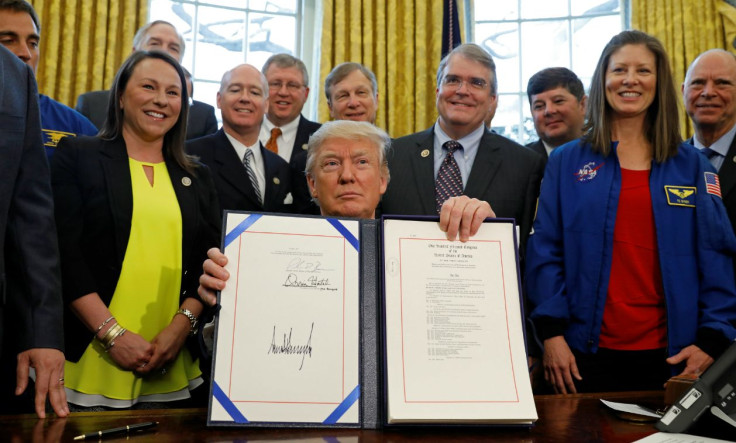Donald Trump signs bill reaffirming support for NASA; Netizens react

US President Donald Trump just signed into law S.442, signifying support for NASA and space travel. The new legislation connotes, among others, funding for missions to Mars and Jupiter, plus resources for the improvement of the space program’s cybersecurity.
For months, people had anticipated that the newly installed president would shift policies towards the values he considers important. His vision for NASA “calls for some dramatic shifts from the priorities the space agency pursued” under former President Barack Obama, USA Today reported.
When the Trump Administration tweeted that it is reaffirming commitment to NASA’s scientists, astronauts and engineers in their pursuit of discovery, some netizens welcomed the post with derision. The announcement came on the heels of news about budgetary cuts for NASA’s earth-monitoring programs.
Discerning online followers saw gaping hole in one area of interest to the scientific community vis-à-vis huge support for the other. As a tech and political commentator tweeted, “…and you continue to refuse to acknowledge man-made climate change—science is NOT a partisan issue!”
Varying Perspectives on the New Legislation
The S. 442 is the first NASA appropriations law in seven years. While politicians lauded Trump’s recent moves on NASA funding, online commenters had mixed views. One expressed that the new legislation is for the advancement of mankind as it will provide jobs, others expressed skepticism.
An online follower noted that the recent move entails “one big spending spree.” Another expressed that it was “accomplished by cutting healthcare for over 24 million Americans, closing down schools, ending funding for arts, neglecting infrastructure, budget cuts for EPA, Dept of Education, Dept of Health, Dept of Transportation and Dept of Housing.” These were reported by RT.
The Trump budget allocated a hefty US$3.7 billion (AU$4.83 billion) to let the Space Launch System go full throttle in powering astronauts into deep space and carrying them safely to the Martian orbit. The Trump administration is also not likely to turn back progress on programs using aerospace organisations like SpaceX.
Also bracing for takeoff is the launch of a Mars rover by 2020 given a US$1.9 billion (AU$2.48 billion) funding. Suffering budgetary cuts are the earth science research grants and halting of four missions -- the PACE, OCO-3, DSCOVR, and CLARREO Pathfinder -- aiming to examine the planet. The aim of NASA’s PACE mission was to help climate scientists gain better understanding of how aerosol particles and clouds influence climate change, and also to monitor ocean ecosystems up close.





















